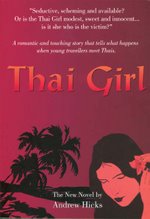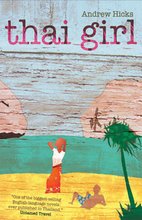
Angkor, the ancient capital of Cambodia is a haunting place in which you'll surely find great beauty. In each of the temples there are many beautiful girls, full figured and voluptuous and wearing only a sarong. It was Kent's quest to find and to photograph as many of these as he could.

As the sun falls, the many visitors leave the great Angkor Wat.

A face on the side of one of the Angkor Thom city gates.

Ta Prohm, left to the trees and jungle by the French.

Stopping more damage by the trees is now not easy.

Approaching the towers of the great Bayon temple.

Offerings at a living shrine in the heart of the Bayon.

Two of the huge faces that gaze down on awed visitors.

Said to be Jayavarman VII's first wife,Jayarajadevi.

The King's second wife, Indradevi, bids us farewell.
Angkor, the ancient capital of Cambodia, is a haunting place in which you’ll surely find great beauty.
Over a wide area, there’s an almost endless number of stone temples, each one with different qualities and in them you’ll find many beautiful women. The ‘girls’ we were looking for when I was there recently, that Kent so obsessively photographed, have fine head dresses and body decoration, are full figured and voluptuous and wear only a sarong around their waists. These women of course lived almost a millennium ago and are now figures in stone, the apsaras or devatas that appear on all Khmer temples.
Who were these women and where are the men? It is Kent’s unswerving mission to try to answer that question. (See www.devata.org and www.DatASIA.us)
At the temples you’ll also find beauty of a more transient kind, the girls and women who see out their young lives, waiting for tourists to buy the scarves and trinkets that they sell. The stalls and these vendors are at all of the temples and either they’re intrusive or an essential part of your Angkor experience, according to your attitude. For me at least they add both colour, charm and a warm Cambodian welcome.
They certainly do their job well and they know how to work a customer. As soon as you arrive at the temple, they’re crowding at the door of your minibus offering you handfuls of postcards and Khmer scarves.
‘Mister… buy postcard! Ten for five dollar. Okay you not buy now… later maybe come back.’
They don’t take no for an answer and in remarkably good English they’ll draw you into conversation.
‘Mister, where you come from? What’s your name, mister?’
And when you say England their eyes light up and they say, ‘Capital London, population sixty five million,’ and rattle off a list of statistics, right down to the names of the football teams. Often it’s a captivating performance and they can do it for any number of countries whose tourists come to the temples.
I asked one little girl aged twelve the capitals of all the obscure countries I could think of. ‘Bolivia?… La Paz. Mongolia?,,,Ulan Batur’, and only after eight or ten capitals had rolled off her tongue did she finally get stuck on Venezuela.
When you then wander off to go round the temple you are a marked man. You are her exclusive sales territory and when you get back, she’ll greet you by name. She’s written it in biro on her palm. On one occasion, a little bored with the hassle, telling the kid I was Adolf Hitler, I felt a bit of a heel when she called me Adolph as I returned.
When you don’t buy from them they then alternate between giving you beseeching and angry looks. Mine doesn’t lose hope of a sale until I’m right inside the minibus, when she stands and balefully gazes in at me through the window. I haven’t bought her postcards so I’ve now condemned to her to a lifetime’s hunger and suffering, I suppose.
At one remote temple I chatted too long to a particularly articulate child as I waited for my friend to survey the devata. I really didn’t want to carry any more cards so as I said goodbye to her, I offered her all of my small change in Riels. It was certainly more than the mark-up she’d make on a set of postcards.
‘No,’ she said. ‘Sorry… cannot take money from tourists.’
I often ask these children how they’ve learned such good English and they always tell me they learned it from the tourists.’
‘Don’t you go to school?’ I press them?
‘I’m saving money to go to school… my dream. Can you help me, please?’ comes the reply.
Sometimes they admit that they go to school for half a day and sell postcards for the rest of it. The Cambodian schools run two shifts a day so half the day is free. How each one comes to be selling at the temples I have no idea though, perhaps because their family has one of the trinket stalls. All I can say is that they are children of great charm and ability. I wish them well and that they don’t one day get turned away from selling outside the temples.
So I ask myself, do all Cambodian children have these special qualities or does a competitive market select the prettiest and pushiest to sell to the tourists?
Their language ability is certainly remarkable though. In many parts of rural Thailand the English teachers at least in the junior schools cannot speak a word of English, yet here these tiny tots are fluent and their pronunciation and diction is excellent.
At one temple, I found myself chatting to a Japanese tourist about this, indicating the little girl who’d just been talking to me.
‘Watch this,’ he said, and walked over to her, looking to me for my reaction. She was chatting to him in Japanese.
Some of the older vendors I met were equally impressive. One attractive young woman with lustrous, sad eyes told me how much she regretted the current political in-fighting between her country and Thailand. How wrong that Cambodia was being pushed around in this way, she complained.
Another twenty year old selling pirated copies of English language novels about Cambodia actually knew what it was she was selling. She had read and could discuss in a sensible way the novels she had enjoyed, something that would take a confident literature graduate in Thailand, and she little more than a street kid.
The really nice thing about Thailand though, as compared for example with being a tourist in India, Morocco or Bali is the absence of hassle. Rarely are you approached by vendors and if you say you’re not interested, they’ll back off with great dignity. Thailand’s greatest asset, despite a minority of rip-off merchants, is surely the gentle dignity and grace of its people. That said though, their inability to use the English language, when compared to the Cambodians puzzles me.
Malaysians of course speak excellent English, but neither the Cambodians nor the Indonesians were colonized by the British and yet their English is so much better than the Thais’. Perhaps their peoples are simply different in how they wish to apply themselves in life. For the Thais even a foreign language that can give them career perhaps is not so important, I surmise.
I thus find differences in national characteristics fascinating, especially as the human experience is basically the same everywhere. Why for example, are the little girls of Angkor so much more assertive than their counterparts in Thailand, a place with similar and overlapping cultures? An obvious answer is that Cambodia is poorer and so they are more desperate for a sale. The struggle for survival in Cambodia has long been very raw and this could a partial reason… though unfortunately that doesn’t explain Laos. This tiny buffer country has been trampled over and laid waste for centuries and is now perhaps the poorest and most backward of the lot, but the Lao people seem to be even more relaxed than the Thais.
Eight years ago in Cambodia, after I’d crossed a very choppy Great Lake in a tiny boat and arrived on the fringes of Battambang, there waiting on the river bank were rows of boys holding up placards advertising their guesthouses, behind them several minibuses into which we were firmly but gratefully ushered. It was active salesmanship of the very best kind.
In contrast, in Laos, when going down river on a slow boat to Luang Prabang, we stopped at a village where there was a row of stalls on the bank selling bananas and snacks. At each one sat a vendor who stolidly remained seated. We sat in our boat and looked at them and they sat and looked at us. They only received a handful of boats a day, yet they didn’t even bother to walk the few yards to the boat to offer us their wares, as would always happen on any train or bus in India or Thailand. Despite their poverty they almost willfully failed to make a single sale.
The Protestant work ethic of northern Europe and the Confucian values of China that have spread southwards into Viet Nam must contribute to national characteristics, but throughout Indo-China and Thailand the people enjoy shared values as Buddhists and thus should be more similar.
The ancient Khmers of course were aggressive enough to create a vast empire receiving tribute from much of what is now Thailand and Laos. Their king, Suryavarman II, build the vast, arrogant monument that is Angkor Wat while, the most hyperactive of them all, Jayavarman VII built the Bayon and so many of the other great monuments. What then drove them to these extraordinary logistical feats of ostentation and display?
On our visit to the Bayon we were taken round by Robert McCarthy, an American archeologist with a Japanese agency, working on the continuing conservation of the temple. He explained to us the restoration of the southern library, their research on the bas reliefs and the structural stabilization of the central tower. As Kent kept clicking away recording the many fine ‘girls’ on the towers of the temple, Bob too shared with us his similar fascination with these devatas, pointing out their many intriguing details.
Particularly fascinating are two very distinctive womanly figures that look to be real individuals. One is thought to be Javavarman’s first wife, Jayarajadevi who died young, while the formidable looking one on the right is said to be Indradevi, his second wife who was sister of the first wife. Intimate details such as these humanise the temples which make it strange that the complex and sophisticated world of the ancient Khmers so totally disappeared into oblivion and that we know so very little about them.
Presiding over the whole scene at the Bayon are the many huge, serene faces carved on the towers that eternally gaze down on the human comedy in shorts and tee shirts that parades beneath them. Who they are and what they represent is constantly disputed by the scholars, but they probably represent the faces of three different gods, that it the devata, the female guardian goddesses, deva, the male gods, and sura, the demons.
Whatever they represented to the ancient world, for me they powerfully symbolize the continuing identity of modern Cambodia as you constantly see the same strong bone structure, the same broad noses and full, square faces in every town and village you visit.
The Khmers indeed are striking people, often with the serenity that their forbears captured in stone, though on my many visits, people have sometimes been surprisingly open in telling me the sorrows of their past. Somehow I always sense that the ocean of suffering so recent in Cambodia’s past still lies not very deep beneath the surface.
The big historical mystery of the ancient Khmers, of course, is why did their empire crumble so rapidly? Though that inevitably is what empires always do.
The greater mystery perhaps is why did the kingdom rise to such prominence in the first place. How could a king such as Jayavarman VII have assembled the resources and skills to construct these vast monuments. Such profligacy just couldn’t last. The lessons of lessons of history should therefore teach us that the seeds of decline are often sown when political leaders pursue unjust wars and build self-aggrandising follies, both religious and secular.
What most fascinates me though about the fall of empires is that there often is no bounce… that they fall headlong and so far. So often the richest civilizations slip into the greatest disarray and poverty. Think of Egypt, China, India, Central America. Even Greece and Rome, Spain and Portugal became the poorest of the European nations.
Cambodia too is among the poorest of modern nations and Isaan where I live in North Eastern Thailand, an outlier of the Angkorian empire in which many of my neighbours are ethnic Khmer, has long been poverty stricken. In contrast to the earlier technological and artistic achievement of Angkor, the region slipped so very far.
Here, unlike in an African village, there is no tradition of carving, no decorative arts, no artistic life, other than music, and the few handicrafts I see such as basket ware are utilitarian and unadorned. Even with growing prosperity, there is little concern for the aesthetic, except as a public statement of wealth.
So what broader lessons does the fall of ancient empires now hold for the world’s great super power and for the West in general?
Answers please on a postcard or as a Comment below!
All I know is that Angkor is a beauteous place and I identify with its people as they struggle to sell a scarf or two, hoping for a better life for themselves and for their children.
Copyright: Andrew Hicks The “Thai Girl” Blog January 2010
.





4 comments:
Having just crossed the Cambodian border today at Pailin I would have to agree that the Cambodians have far better English speaking skills than the Thais. When I arrived at the bus station on the Thai side there was zero English spoken at the bus station, or the food stall, even though at every bus station in Cambodia all the tax drivers besiege you with their wares and fares - in English.
I don't know why Thais have such poor English speaking skills but here is a possible reason. Thailand is the only Southeast Asian nation to escape colonisation. This proud resistance to invaders still lives on in a wall of legal barriers to foreign ownership. Foreigners are forbidden from owning Thai land, farming Thai soil or, outside certain exemptions, owning a business without a Thai joint venture.
Education is all about attitude and motivation. What some of these underlying nationalist sentiments and fear of foreign domination could mean is that Thais are not really all that bothered to learn a foreign language either.
Pauline
Wonderful pictures - makes me dream of being there.
I can't be certain as to the reasons of the Laotian merchant ethos vs. Cambodian, Thai, or Viet Namese merchant ethos, but a strong part of me thinks that it's because the Laotians deposed their monarchy internally for a Marxist-inspired Communist system. Viet Nam also went Communist, but that was more or less pragmatism after a major war, and of course in Cambodia you have the byproducts of the war, with less of the Communism.
Whatever its root causes, the indolence of Laos makes some think of it as dreamy and psuedo-Hippy. It frustrates and angers me ... so many people, needing things to do. In Cambodia and Viet Nam you have people fighting desperately to better themselves (saying nothing here of Thailand, which is of course far developed than its neighbors). But Laos continues to slide into a morass. Like Burma, a responsible government could pull millions out of poverty at a stroke, if it could just get out of its own way. Sigh.
I'm not so sure I agree that a good government could pull Laos out of its poverty at a stroke.
As a tiny land-locked country, what resources do they have to exploit? Tourism, logging and hydo-electric power (ie more big dams). All of these can cause considerable destruction.
In fact I fear hasty development, getting rich quick. Stability is in fact the most valued factor in conservative societies. Change produces winners but even more losers.
New tides of wealth have to be managed for the benefit of all and a young country is not generally ready to handle that.
Perhaps Laos need a benevolent dictatorship to direct its progress. Of course that's what communists think they are!
Keep commenting,
Andrew
Post a Comment